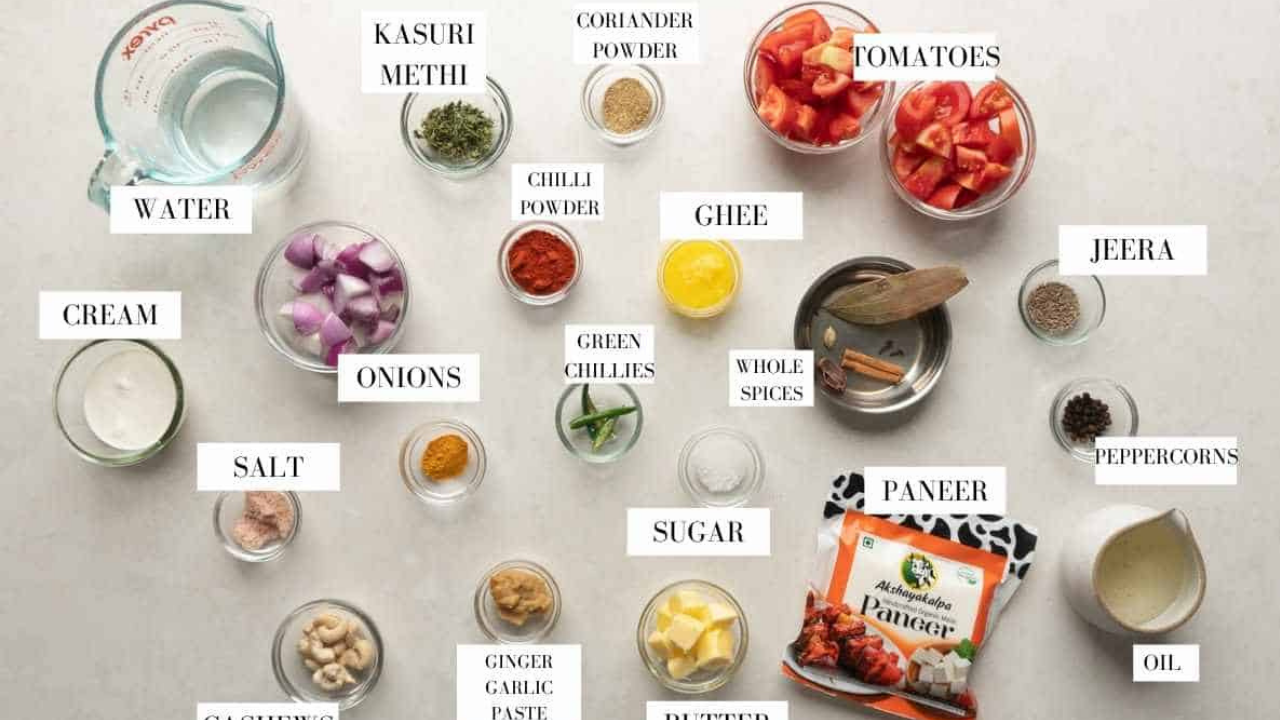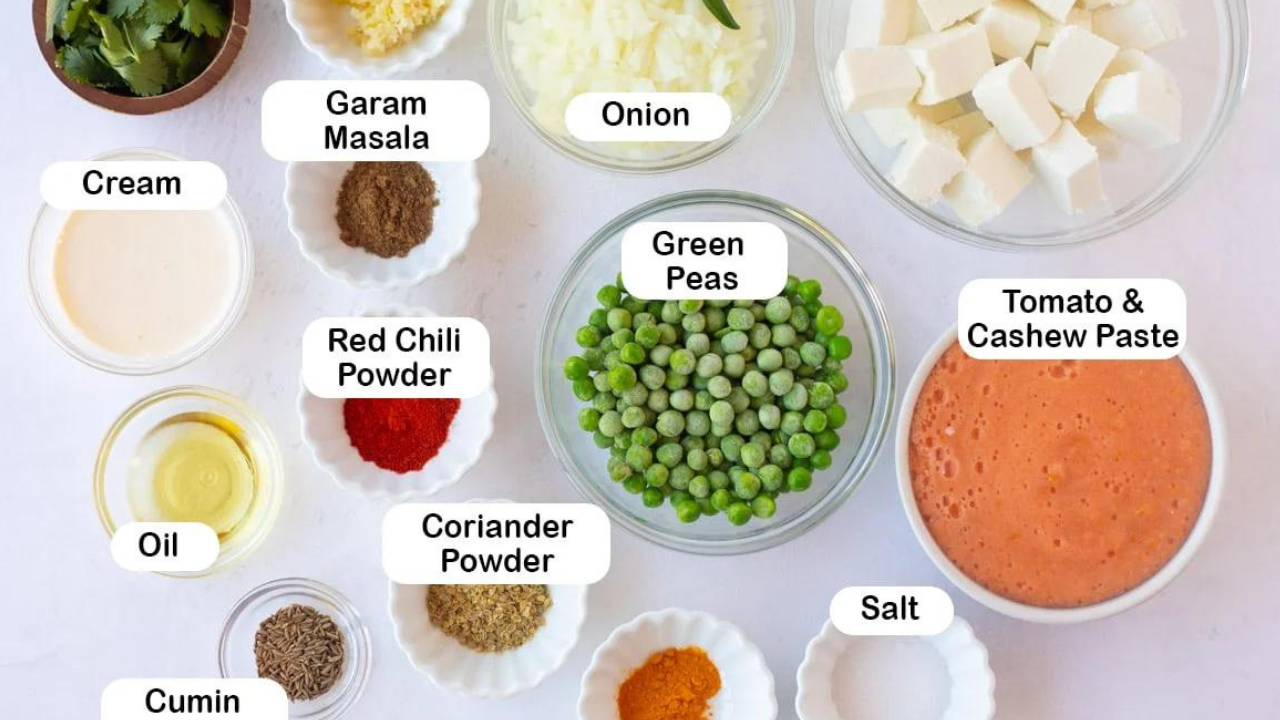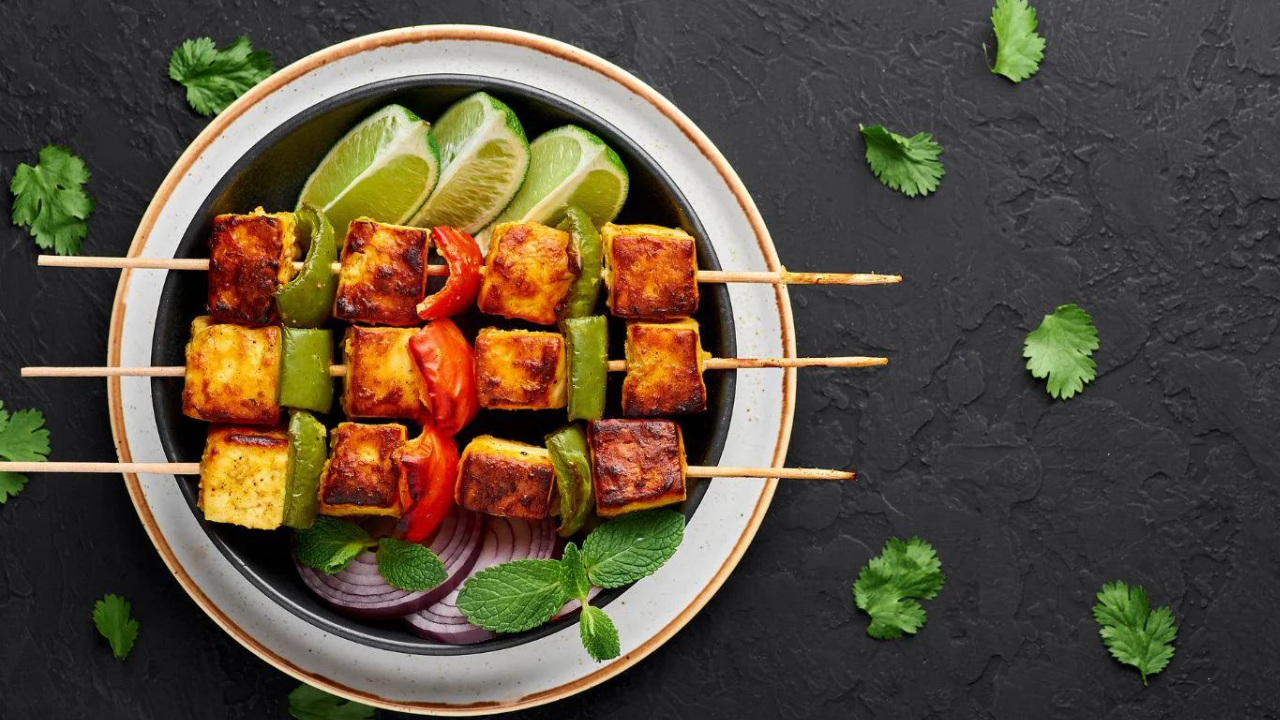Paneer, a staple ingredient in Indian cuisine, has roots that stretch back centuries. It is believed to have originated in the Indian subcontinent, and its cultural significance is profound, permeating numerous traditional dishes from the region. Paneer, also known as Indian cottage cheese, is unique due to its method of preparation, which involves curdling milk with acids such as lemon juice or vinegar.
The taste profile of paneer is mild and creamy, making it highly adaptable for a variety of dishes. Its non-melting texture under heat allows it to be grilled, fried, or incorporated into rich curries without disintegrating, offering a satisfying bite. From the spicy Paneer Tikka to the luxurious Paneer Butter Masala, this versatile cheese caters to a range of palates and culinary applications.
In addition to its culinary versatility, paneer is also lauded for its nutritional benefits. As a rich source of protein, it is especially celebrated among vegetarians and those seeking protein-rich foods to supplement their diets. Paneer also contains significant amounts of calcium, promoting healthy bones, and it is relatively low in carbohydrates, making it suitable for those monitoring their carb intake. Moreover, paneer is a good source of essential nutrients such as vitamin D and B12, supporting overall health and wellness.
The popularity of paneer in Indian cuisine is a testament to its essential role in creating flavorful, protein-packed dishes that can be enjoyed by people of all dietary preferences. Its impressive nutritional profile coupled with its adaptability in cooking makes it a favored choice among chefs and home cooks alike. Whether featured in a festive feast or included in everyday meals, paneer continues to captivate taste buds and nourish bodies worldwide.
Ingredients Needed for Paneer Recipe

Creating a delectable paneer at home requires a precise selection of ingredients to ensure its authentic flavor and texture. The primary ingredient is milk, with whole milk being ideal due to its high-fat content, which lends the paneer its rich, creamy consistency. It is recommended to use fresh, organic whole milk for the best results.
For the curdling agent, white vinegar or lemon juice are both popular choices. Each of these agents has its own unique impact on the flavor of the paneer. White vinegar tends to create a more neutral taste, allowing the paneer to absorb flavors from accompanying dishes more readily. Lemon juice, on the other hand, imparts a slight tanginess, offering a distinct taste that can enhance certain recipes. For those who prefer a milder tang, freshly squeezed lime juice can also be used.
Additionally, herbs and spices can be introduced to infuse the paneer with additional layers of flavor. Fresh coriander leaves, mint, or even fenugreek can be added to the milk before curdling to offer a subtle aromatic profile. For an extra kick, a pinch of black pepper or cumin seeds can be mixed into the curd before pressing it into shape.
Optional ingredients allow for further experimentation. Adding a teaspoon of roasted garlic or finely chopped green chilies can cater to those who enjoy a more robust, spiced paneer. Cashew or almond paste can also be blended into the mixture before setting for a creamier and nuttier taste. These variations can complement numerous Indian dishes, providing a range of culinary possibilities.
With these essential and optional ingredients, the journey of making authentic, delicious paneer at home becomes a flavorful and enriching culinary experience.“`
Step-by-Step Guide to Making Homemade Paneer
Creating paneer from scratch is a fulfilling culinary experience that elevates any Indian dish. Follow this detailed guide to craft the perfect paneer, ensuring its quality and taste at every step of the process.
Boiling the Milk
Begin by pouring 2 liters of full-fat milk into a large, heavy-bottomed pot. Full-fat milk is essential for achieving the rich texture and flavor characteristic of authentic paneer. Place the pot over medium heat, stirring occasionally to prevent the milk from scorching. As the milk begins to foam and rise, reduce the heat to low and allow it to simmer gently.
Adding the Curdling Agent
Once the milk has reached a gentle simmer, it’s time to introduce the curdling agent. Fresh lemon juice or vinegar serves best. Gradually add 2-3 tablespoons of your chosen agent while stirring the milk gently. You will observe the milk curdling almost immediately, separating into curds (solid) and whey (liquid). If curds do not form within a minute, add a little more curdling agent.
Separating the Curds from the Whey
Once the curds have fully formed, turn off the heat and let the mixture rest for a few minutes. Line a colander with a clean muslin cloth or cheesecloth and place it in the sink. Carefully pour the curdled milk into the colander, allowing the whey to drain away. Rinse the curds under cold, running water to remove any residual acidity from the curdling agent, which ensures a smooth paneer taste.
Pressing the Curds into a Solid Block
Gather the muslin cloth’s edges, twisting them to squeeze out any excess liquid from the curds gently. Shape the curds into a rough block inside the cloth. Place the wrapped curds on a flat surface and set a heavy weight on top—this can be a pot filled with water or a heavy book. Leave the curds to press for 1-2 hours. This step is crucial for achieving a firm yet malleable paneer texture, suitable for various cooking methods.
Following these steps precisely helps ensure that your homemade paneer is of exceptional quality, with a soft texture and delightful taste that enhances any dish. Avoid common mistakes such as using low-fat milk or insufficient pressing time, which can result in a crumbly and less flavorful paneer. Enjoy the process and the delicious final product!
Common Paneer Dishes and How to Prepare Them

Paneer, an essential component of Indian cuisine, features prominently in a variety of delectable dishes. Four of the most cherished paneer dishes are Paneer Tikka, Palak Paneer, Shahi Paneer, and Paneer Butter Masala. Each dish brings its unique flavors and cooking techniques, making them versatile options for any meal.
Paneer Tikka: This popular appetizer involves marinating paneer cubes in a mixture of yogurt and spices like turmeric, garam masala, and coriander powder. Once adequately marinated, the paneer is skewered and grilled until charred and crispy. For a tangy twist, squeeze some lemon juice over the cooked paneer tikka. This dish is best accompanied by mint chutney and served with naan or a salad.
Palak Paneer: A nutritious and flavorful entrée, Palak Paneer involves cooking paneer cubes in a rich spinach puree. Start by blanching and pureeing fresh spinach. In a pan, sauté cumin seeds, onions, garlic, and green chilies. Add the spinach puree to the mixture and let it cook for a few minutes before incorporating the paneer cubes. Season with a bit of garam masala and salt. This dish pairs perfectly with steamed rice or warm chapati.
Shahi Paneer: Known for its creamy texture and luxurious taste, Shahi Paneer is made by simmering paneer cubes in a rich gravy of cashews, cream, and a blend of aromatic spices. Begin by making a paste of soaked cashews, ginger, and garlic. Sauté the paste with onions and tomatoes until the oil separates, then add the paneer cubes and fresh cream. Cook until the paneer absorbs the flavors, and serve this royal dish with naan or jeera rice.
Paneer Butter Masala: A restaurant favorite, Paneer Butter Masala features paneer cooked in a velvety tomato-based gravy. Start by blanching tomatoes and blending them into a smooth puree. Sauté this puree with butter, cashew paste, and spices like dried fenugreek leaves and garam masala. Add the paneer and simmer until the gravy thickens. This creamy dish is best enjoyed with butter naan or basmati rice.
Each of these paneer dishes offers a unique taste experience, made possible through diverse cooking methods such as grilling, simmering, or baking. Whether served with naan, chapati, or rice, these delightful dishes are sure to complement any meal, bringing a touch of authentic Indian flavor to your dining table.
Tips for Cooking With Paneer
Cooking with paneer can be a delightful experience, but understanding a few essential tips can elevate your dishes from good to exceptional. To prevent paneer from crumbling, ensure that it’s fresh and not overly dry. If you are working with store-bought paneer, soaking it in warm water for about 10 minutes can help regain its softness. When you cut paneer, use a sharp knife for clean cuts to avoid breaking the delicate texture.
Marinating paneer is a crucial step to infuse robust flavors into your dish. A marinade typically includes yogurt, spices, and sometimes a bit of lemon juice. Allow the paneer to sit in the marinade for a minimum of 30 minutes, but overnight refrigeration enhances flavor absorption significantly. This makes the paneer more flavorful and ensures it remains succulent when cooked.
To maintain a soft and succulent texture while cooking, avoid overcooking paneer. Whether you are grilling, frying, or including it in a curry, cook on medium heat and monitor closely. For curries, add the paneer towards the end of the cooking process. This helps the paneer retain its softness and ensures it’s not rubbery.
Proper storage of paneer is essential for maintaining its texture and flavor. In the short term, refrigerate paneer in an airtight container with a little water to prevent it from drying out. Change the water daily to keep the paneer fresh. For long-term storage, paneer can be frozen. Cut it into appropriate portions and wrap it tightly in plastic wrap or aluminum foil before placing it in a freezer-safe container. Thaw frozen paneer in the refrigerator, not at room temperature, to maintain its consistency.
By following these pragmatic tips, your culinary endeavors with paneer will undoubtedly yield delicious results, enhancing any meal with this versatile and beloved Indian delight.“““html
Pairing Paneer With Other Ingredients

Paneer, a beloved Indian cheese, offers a versatile canvas for various culinary creations. When pairing paneer with other ingredients, aim for a harmonious balance of flavors, textures, and colors to create satisfying and delicious meals. One effective approach is to combine paneer with a variety of vegetables. Classic combinations include bell peppers, tomatoes, spinach, peas, and cauliflower. These vegetables not only complement the mild, creamy taste of paneer but also contribute to a nutritionally balanced dish.
Spices play a pivotal role in enhancing the flavor profile of paneer dishes. Traditional Indian spices such as cumin, coriander, turmeric, and garam masala elevate paneer by adding aromatic complexity. Including fresh herbs like cilantro and mint can introduce a vibrant freshness. To deepen the flavor, consider marinating paneer in a mix of yogurt, ginger, garlic, and your choice of spices before grilling or cooking it. This technique infuses the paneer with robust flavors, making it a standout element of any dish.
Sauces are another key component when pairing paneer. Rich, tomato-based gravies like makhani or tangy, yogurt-based marinades can envelop paneer in layers of flavor, transforming a simple meal into a gourmet experience. Coconut milk and cashew paste are excellent choices for creamy, indulgent sauces that sit well with the texture of paneer. Consider blending sweet and savory elements, such as adding honey or a touch of sugar to balance the natural tartness of tomatoes.
Beyond traditional Indian recipes, paneer can be an exciting addition to non-traditional dishes. It can be cubed and tossed into salads, providing a protein boost and a satisfying texture. In sandwiches, grilled paneer can serve as a hearty, flavorful filling. Fusion dishes such as paneer tacos with a blend of Indian and Mexican spices, or paneer sushi rolls, showcase its versatility. The key is to experiment and find combinations that cater to your palate while utilizing paneer’s unique qualities to create innovative and delightful meals.“`
Health Benefits and Nutritional Information of Paneer
Paneer, a popular Indian dairy product, not only delights the palate but also offers substantial nutritional benefits. Known for its rich protein content, paneer is an excellent source of high-quality protein, making it an essential part of the diet for individuals focused on muscle-building and overall fitness. A 100-gram serving of paneer typically provides around 18 grams of protein, which is crucial for muscle repair and growth.
In addition to its protein prowess, paneer is packed with essential vitamins and minerals. It is particularly rich in calcium, promoting bone health and dental strength, and it also provides a good amount of phosphorus and magnesium, which work in tandem to maintain various physiological functions. Vitamins like B12 and D are present in paneer, contributing to energy production and immune function.
The versatility of paneer allows it to fit seamlessly into various dietary plans. For those aiming to build muscle, the protein and amino acids in paneer support muscle synthesis and recovery. On the other hand, paneer can be included in calorie-controlled diets for weight management. Its high protein and fat content contribute to satiety, helping to reduce overall calorie intake by curbing hunger pangs.
However, individuals with lactose intolerance should exercise caution. Paneer contains lactose, which can cause digestive discomfort in some people. Despite this, paneer is often better tolerated than other dairy products because the fermentation process reduces some lactose content.
When compared to other protein sources like meat, legumes, and tofu, paneer offers a unique combination of protein and essential nutrients. It provides a vegetarian option that rivals animal-based proteins in terms of nutritional value, while also being easier to digest for many. This makes paneer a favored option among vegetarians and those seeking to diversify their protein intake.“`html
Troubleshooting Common Paneer Issues
Paneer, a versatile and cherished element in Indian cuisine, occasionally presents several challenges during its preparation and cooking process. Addressing these common issues can significantly enhance your paneer-making experience, ensuring consistently satisfactory results.
One frequently encountered problem is paneer becoming too crumbly. The primary cause for this is insufficient pressure applied during the setting process. To remedy this, ensure you are using a heavy weight or a paneer press to extract excess whey, allowing the curd to consolidate firmly. Additionally, using full-fat milk can contribute to a smoother texture, aiding coherence. Another factor to monitor is the acidity level. Excessive coagulating agents like lemon juice or vinegar can make the paneer excessively dry and crumbly. Moderation and gradual addition of these agents can avert this issue.
Another issue involves paneer not setting properly. This often stems from incorrect temperatures being used during curdling. It is crucial to heat the milk to the right temperature (around 85°C or 185°F) before adding your coagulating agent. If the milk is too cold, the curds will be weak and not form a firm paneer. Conversely, overheating can denature proteins, resulting in suboptimal paneer consistency. A reliable kitchen thermometer can be an invaluable tool in this aspect.
Ppaneer occasionally may lose its flavor during cooking. A significant factor here is overcooking. Paneer should be cooked for short durations to retain its delicate taste and moist texture. Prolonged cooking times can render the paneer rubbery and bland. Incorporating paneer towards the end of your cooking process and lightly simmering it in the curry can help preserve its rich flavors.
Incorporating these practices into your paneer-making routine can mitigate common issues, ensuring a delectable and successful outcome every time.
Conclusion
Sweet and spicy paneer skewers are a delightful addition to any gathering, combining rich flavors and vibrant colors that are sure to impress your guests. Easy to prepare and bursting with taste, these skewers cater to both vegetarian and non-vegetarian palates, making them a versatile choice for any occasion.
If you have any questions or concerns about our Article, please reach out to our support team. We’re here to help you!










Good
Thanks for another informative web site. Where else could I get that type of info written in such an ideal way? I have a project that I am just now working on, and I have been on the look out for such information.